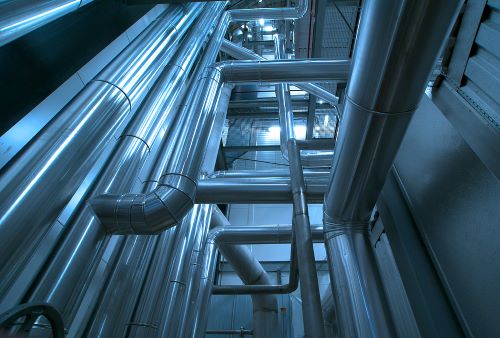Stainless steel is a type of low-carbon steel that offers excellent resistance to corrosion thanks to the addition of chromium in its chemical makeup. Chromium reacts with oxygen in the air, forming a chromium oxide film on the surface of the steel that self-heals when damaged. Other elements, such as nickel, nitrogen, and molybdenum, can be added to the steel to make it even more resistant to corrosion. Classes of stainless steel vary depending on the specific chemical makeup, with austenitic stainless steel being the most common. Two popular types of austenitic stainless steel are 304 and 316. Let’s compare these two materials and review how they are used by different industries.
Grade 304 Stainless Steel
Perhaps the most commonly used stainless steel is type 304. Grade 304 stainless steel has a high amount of nickel, typically between 8% and 10.5% by weight, and chromium, which makes up about 18% to 20% by weight. Other elements found in grade 304 include manganese, carbon, silicon, and iron.
Benefits of Grade 304 Stainless Steel
Grade 304 stainless steel offers excellent formability and can be easily fabricated by a CNC plasma cutting machine or another type of burn table into just about any shape. It is also more affordable than grade 316 and other classes of stainless steel. One downside of 304 stainless steel is that there is a limit to its corrosion-resistance properties, which makes it not ideal for highly corrosive environments.
Applications of Grade 304 Stainless Steel
Grade 304 stainless steel is often used in applications that would otherwise corrode standard carbon steel. Examples include commercial food and beverage processing equipment, residential and commercial appliances, and industrial piping system components, such as pipes, fasteners, and heat exchangers.
Grade 316 Stainless Steel
Type 316 stainless steel has a similar chemical makeup to grade 304 with one key difference: It has a higher amount of molybdenum. In fact, grade 316 stainless steel has about 2% to 3% of molybdenum by weight compared to the trace amounts found in type 304. The added molybdenum gives 316 stainless steel even better resistance against corrosion.
Benefits of Grade 316 Stainless Steel
The impressive strength of 316 stainless steel means it can be used in environments that are too corrosive for other types of stainless steel, making it a more versatile choice in heavy industrial applications. A downside of type 316 is that the extra molybdenum makes it less pliable than grade 304 and more expensive.
Applications of Grade 316 Stainless Steel
Because grade 316 stainless steel is tough enough to resist corroding when exposed to moisture, it is of the most common materials used in marine environments. It can also be found in petrochemical refinery equipment, medical devices, chemical storage containers, and other industrial systems that come into contact with corrosive materials.
Heavy-Duty CNC Plasma Cutters for Fabricating Stainless Steel
When custom fabricators need reliable equipment to deliver perfect processing of stainless steel, they choose Machitech. Our heavy-duty CNC plasma cutters and other custom fabrication solutions are fully automated and include free and unlimited lifetime support. For more information, contact Machitech today.
 English
English  Français
Français 
